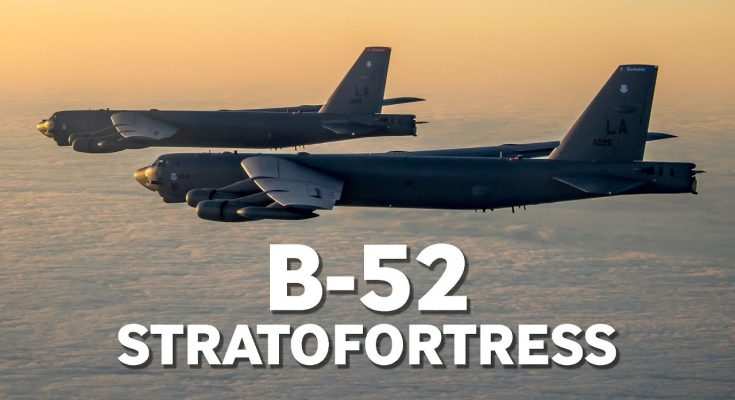The B-52 Stratofortress, originally designed in the 1950s, has managed to outlive newer bombers for several key reasons:
1. Versatility and Adaptability:
The B-52 was built with versatility in mind, designed to carry a wide range of weaponry, from nuclear payloads to precision-guided conventional bombs. Over its decades of service, the B-52 has been repeatedly upgraded with modern avionics, engines, and weapons systems, allowing it to adapt to the evolving needs of military strategy. This adaptability has made it a workhorse for the U.S. Air Force, capable of fulfilling a variety of missions.
2. Extensive Upgrades:
Instead of retiring the B-52 and investing in new bombers, the U.S. has opted to upgrade and modernize the existing fleet. Over the years, the B-52 has received major upgrades in its engines, avionics, and weapons systems. For example, it now carries modern precision-guided munitions and has integrated advanced communications and radar systems. These upgrades have allowed the B-52 to remain relevant and effective in modern combat scenarios.
3. Cost-Effectiveness:
Building and maintaining new bombers is expensive. Developing new platforms like the B-21 Raider takes years and billions of dollars in research and production costs. The B-52, on the other hand, has already been paid for, and its long lifespan provides a cost-effective option for the U.S. Air Force. By continuing to upgrade it instead of replacing it outright, the military gets a capable bomber at a fraction of the cost of a brand-new aircraft.
4. Large Payload Capacity:
The B-52 has one of the largest payload capacities among strategic bombers, making it an excellent platform for carrying a wide variety of munitions. Even with modern stealth bombers, such as the B-2 Spirit or B-21 Raider, the B-52’s ability to carry a diverse range of weapons, including both nuclear and conventional bombs, makes it a versatile option for the Air Force. The B-52 can also carry a large number of bombs, making it highly effective in certain strategic scenarios.
5. Long-Range Capability:
The B-52 is capable of flying long distances, which is crucial for strategic bombing. Its ability to carry out extended missions without requiring frequent refueling or relying on additional support has made it invaluable for global reach, especially in deterrence roles.
6. Proven Performance in Combat:
The B-52 has demonstrated its effectiveness in multiple conflicts, including the Vietnam War, Gulf War, and more recent conflicts in the Middle East. Its proven track record in various theaters of war has reinforced its value. Unlike newer bombers that may still need to prove themselves in real-world combat, the B-52 is a known quantity, and its performance in operational conditions remains reliable.
7. Reliability:
The B-52 has shown incredible mechanical longevity. It was designed to be sturdy and long-lasting, and its well-maintained airframes have continued to serve effectively. With regular upgrades and maintenance, many B-52s are still in service, far beyond their initial expected lifespan.
8. Stealth Isn’t Always Necessary:
While stealth capabilities are important for avoiding enemy radar detection, there are scenarios where the B-52’s traditional radar profile isn’t a significant disadvantage. The B-52 can be used for missions where stealth is less important, such as dropping large quantities of conventional bombs, or when operating in areas where its presence is already known or expected.
In short, the B-52’s combination of adaptability, capacity for upgrades, cost-effectiveness, and long-range capabilities allows it to remain relevant in modern warfare, even as newer bombers like the B-2 and B-21 take on some of the more specialized roles. The U.S. Air Force continues to rely on the B-52 because it is still effective for a wide range of missions and provides a solid return on investment over its extended lifespan.



